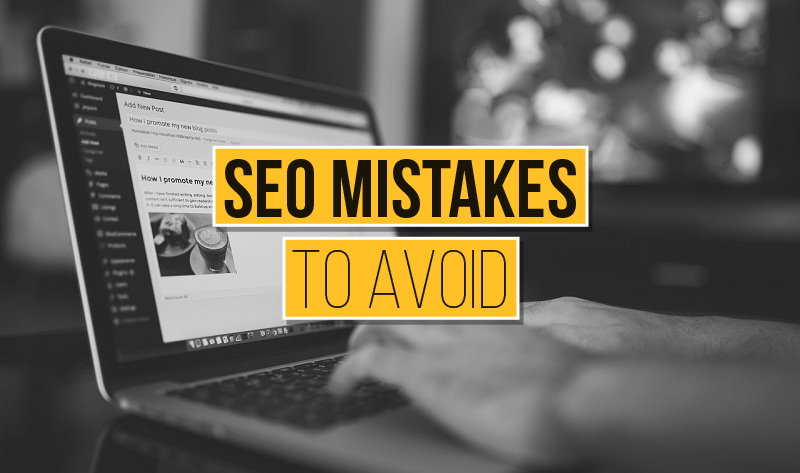SEO isn’t what it used to be. Every day, the expectations for SEO are expanding. But it’s not all pressure—there’s a world of opportunity waiting for those who understand it.
The SEO space itself is booming. By 2027, it’s expected to be a $1.6 billion market. What started as a niche skillset has transformed into a core revenue channel, now deeply woven into content strategies and broader digital marketing efforts.
And that’s what makes SEO so fascinating—it’s always shifting. From new search algorithms to evolving customer preferences, marketers are constantly navigating changes. Stay current, and SEO becomes a powerhouse for growth; fall behind, and catching up can feel overwhelming.
Let’s look at some common SEO mistakes and, more importantly, how to avoid them.
Mistake 1: Not Knowing Your Audience
You can’t optimize for someone if you don’t truly understand them. SEO isn’t just about keywords—it’s about speaking your customer’s language.
Many marketers assume they already “know” their audience but fail to dig deeper into how people search, what they care about, and the context of their needs. Consumers today expect instant answers. Real-time data is as crucial as historical trends.
Also, beware of ignoring long-tail keywords. Sure, you might know your products inside and out, but how does your audience search for them? Sometimes their phrasing is vastly different.
Tips:
- Explore the market where your customers shop. What broader trends are influencing their choices?
- Combine historical data with real-time insights to track changing behavior.
- Match search intent with your keyword strategy using tools like Google’s Keyword Planner.
Mistake 2: Skipping the SEO Roadmap
Knowing your audience is one thing—but acting on that knowledge requires a plan. Unfortunately, many businesses skip this crucial step.
Last year, only 36% of small businesses had an SEO strategy in place. Without a structured roadmap, SEO efforts are scattered, unfocused, and ineffective.
Building a strategy means aligning teams across content, IT, engineering, PR, and product. It’s about securing leadership buy-in and making SEO a shared priority.
Tips:
- Audit competitors—look at their rankings, keywords, and content.
- Break your plan into actionable steps and assign clear roles.
- Invest in technology that supports collaboration and strategy execution.
Mistake 3: Creating Content That Misses the Mark
Content creation is where many SEO strategies derail. The temptation to rank for popular keywords often leads to unfocused, low-quality work.
Search engines reward relevance, so if your content doesn’t directly address user questions, it’s unlikely to perform well. Trying to jam multiple topics into one article or optimize for too many keywords can dilute your message.
Tips:
- Align content creation with your SEO strategy.
- Answer the questions your audience is searching for—clearly and concisely.
- Use a mix of formats—blogs, videos, visuals—tailored to different types of searches.
- Follow Google’s E-A-T principles: Expertise, Authoritativeness, and Trustworthiness.
Mistake 4: Publishing Non-Original Content
Copy-pasting content or using “spun” versions may have worked in the past—but today’s algorithms are smarter.
Duplicate or low-value content isn’t just ineffective—it can actively hurt your rankings. Search engines flag it as spam and push it down.
The solution? Focus on originality. Share real stories, include actionable insights, and create content that resonates.
Tips:
- Craft headlines that accurately reflect your content.
- Provide actionable advice and examples.
- Weave in relatable narratives and trustworthy quotes.
- Use multimedia—videos and images—to enrich the experience.

ALSO READ: What Is SEO? Search Engine Optimization Best Practices
Mistake 5: Overlooking Title Tags, Meta Descriptions, and Schema Markup
Optimizing content goes far beyond inserting keywords. Title tags and meta descriptions are often neglected, but they play a key role in helping search engines understand your content.
Similarly, schema markup gives search engines context—something they need to properly index and rank your site. Without it, even great content can be buried.
Tips:
- Write unique, clear, and concise title tags for each page.
- Match keywords to search intent and keep tags specific.
- Use schema markup to clarify your content’s structure.
- Don’t forget image alt tags—they tell search engines what your visuals represent.
Mistake 6: Ignoring Link Quality
It’s not about how many links you have—it’s about the quality of those links.
Linking to credible, high-ranking sites improves trust signals. Linking back from others can boost traffic over time. But using poor-quality sources or generic anchor text like “click here” wastes SEO opportunities.
Tips:
- Focus on linking to trusted, relevant sources.
- Regularly audit links and fix broken ones.
- Build content that naturally attracts links by offering real value.
- Use tools to track link performance and build new connections.
Mistake 7: Messing Up Internal Linking
Internal links help spread SEO value, but they can also backfire if used carelessly.
Linking every page just for the sake of it can confuse users and look spammy to search engines.
Tips:
- Link related pages together thoughtfully.
- Conduct audits to ensure links are working and purposeful.
- Don’t overload content with irrelevant links.
Mistake 8: Neglecting Speed and Mobile Experience
It’s not enough to optimize keywords—you need a fast, mobile-friendly site too.
With mobile-first indexing, search engines prioritize sites that offer smooth, responsive experiences. A slow or poorly designed site can cost you ranking points.
Tips:
- Prioritize load speed to prevent user drop-offs.
- Invest in responsive design for mobile browsing.
- Optimize local search elements.
- Avoid intrusive ads and slow-loading media.
Mistake 9: Treating SEO in Isolation
SEO doesn’t exist in a vacuum—it intersects with every digital marketing channel.
If you fail to integrate SEO with your social, email, paid, and PR efforts, you miss out on measuring its full potential.
Tips:
- Align SEO goals with other marketing strategies.
- Foster collaboration across teams.
- Educate others on how SEO supports broader campaigns.
Mistake 10: Ignoring Analytics and Using the Wrong Tools
Without tracking results, SEO efforts are guesswork.
Tools like Google Analytics and Search Console are invaluable for measuring how content performs. But many marketers either overlook them or rely on outdated approaches.
The SEO tech landscape offers solutions for keyword research, link building, reporting, and automation—use them wisely.
Tips:
- Pick tools that fit your organizational needs.
- Use data to fine-tune strategies.
- Leverage technology to boost efficiency and performance.
Final Thoughts
SEO is no longer optional—it’s a cornerstone of content marketing. Even seasoned pros can stumble into common traps, but knowing these mistakes ahead of time puts you in a strong position.
By understanding your audience, planning strategically, creating meaningful content, and embracing data-driven insights, you can build an SEO approach that’s resilient, effective, and sustainable.
Avoid these pitfalls, and you’ll be well on your way to standing out in a crowded digital landscape.



